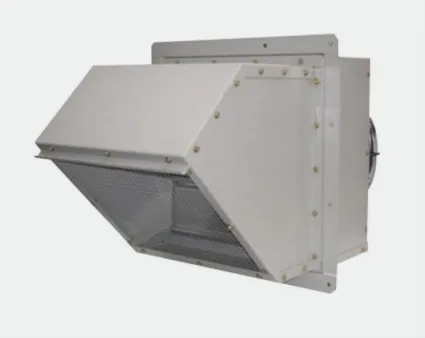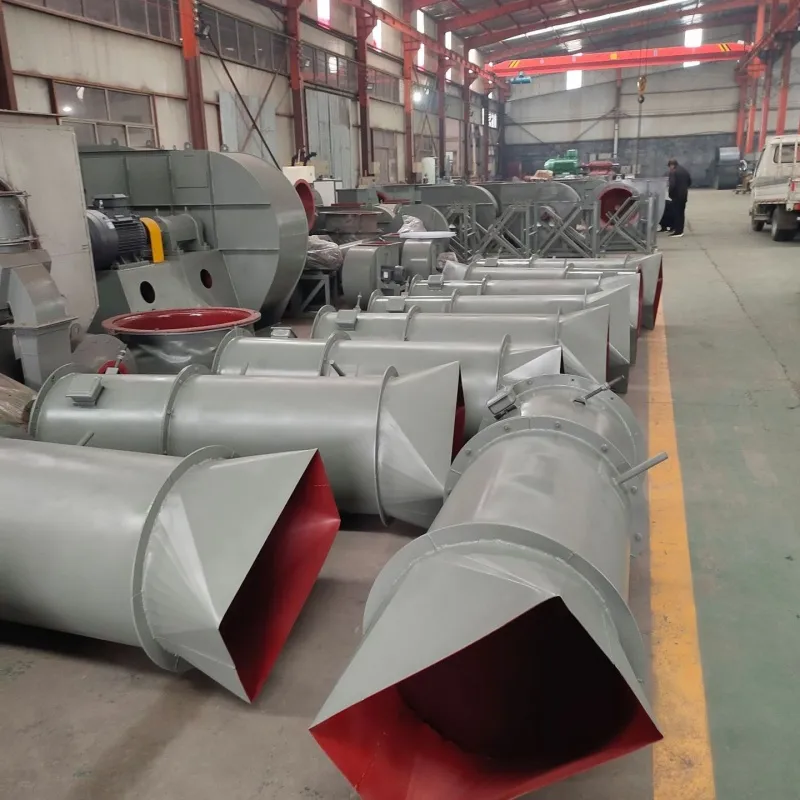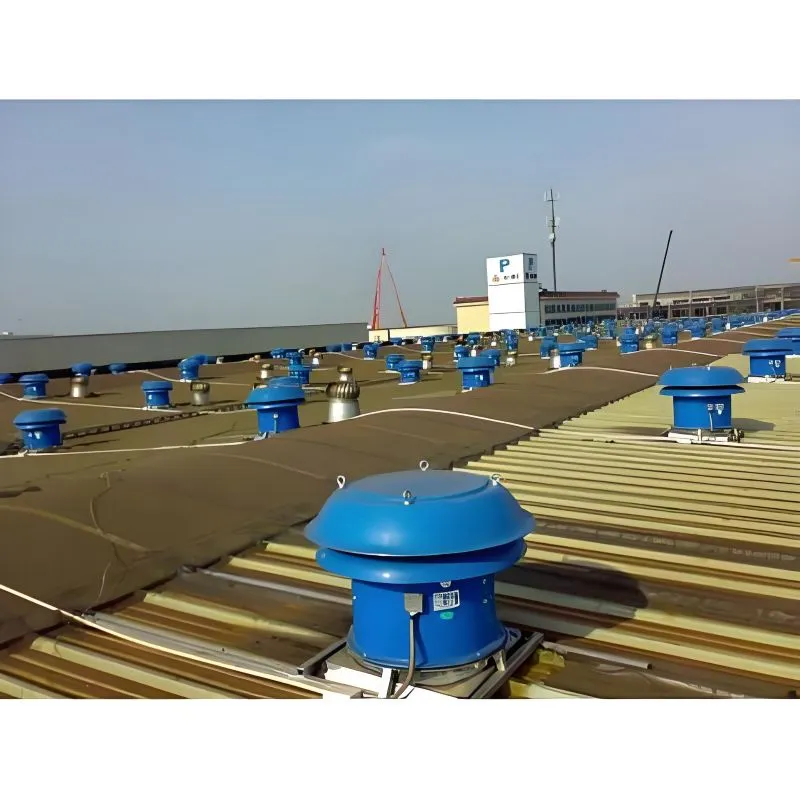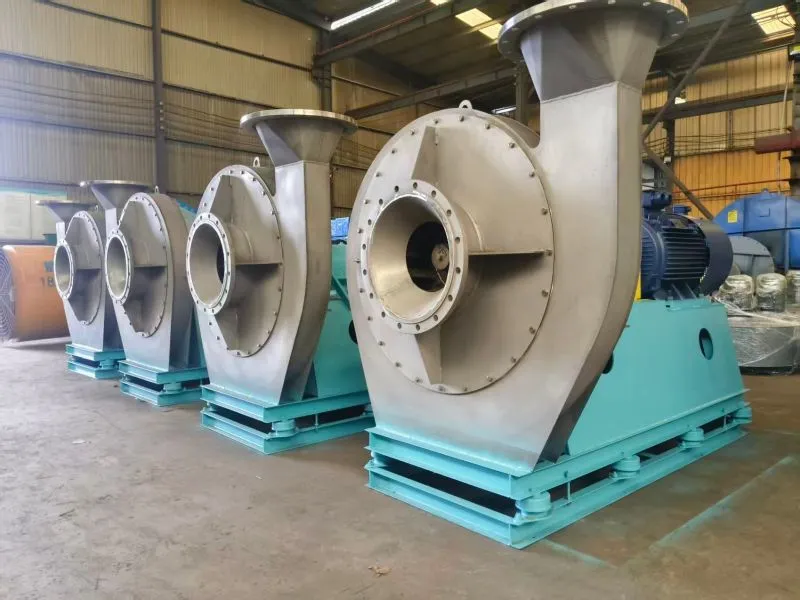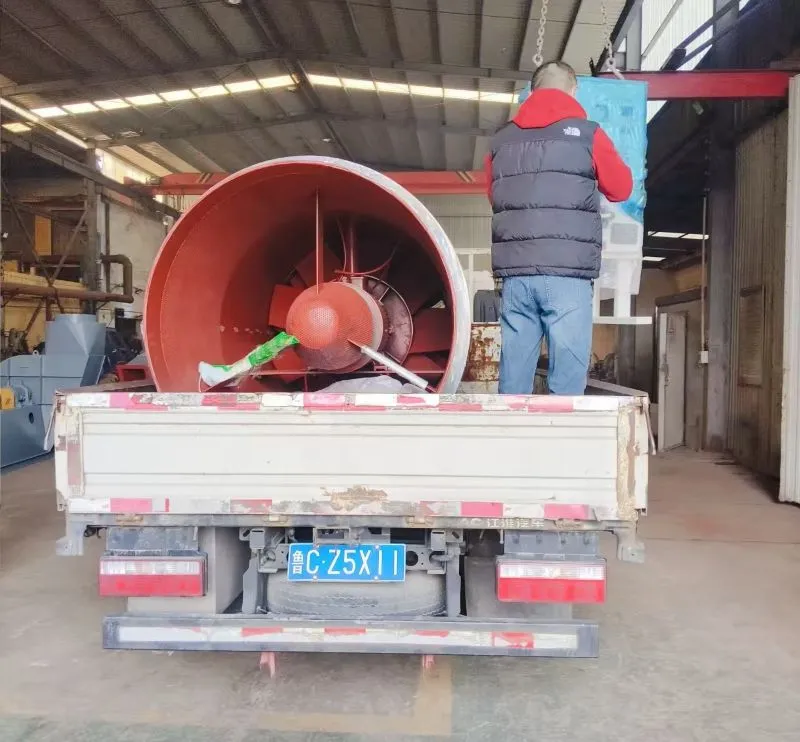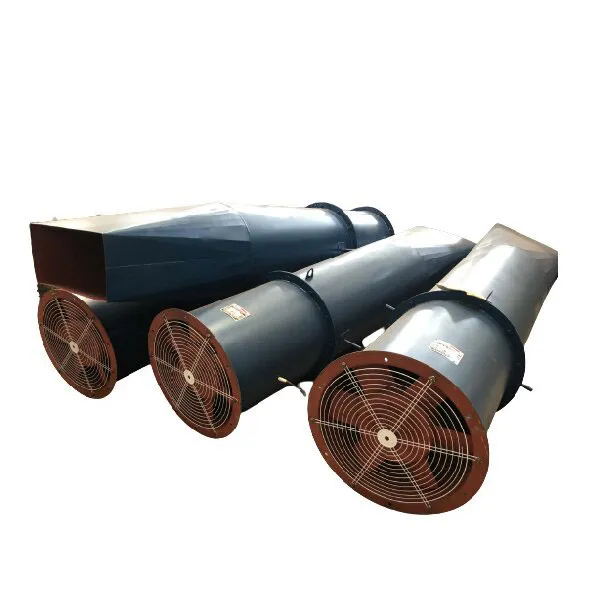ප්රේරිත කෙටුම්පත් විදුලි පංකා නවීන කාර්මික භාවිතයන්හි තීරණාත්මක සංරචක වේ, නමුත් තිරසාරභාවය සඳහා ඔවුන්ගේ භූමිකාව බොහෝ විට නොසලකා හරිනු ලැබේ. ඇතැමුන් ඒවා තවත් යාන්ත්රික අවශ්යතාවයක් ලෙස බැහැර කළ හැකි වුවද, තවත් බොහෝ දේ ක්රීඩා කරයි. සැබෑ ලෝකයේ යෙදුම් සහ කර්මාන්ත භාවිතයන් තුළින් තීක්ෂ්ණ බුද්ධියක් ලබා ගනිමින්, තිරසාර මෙහෙයුම් සඳහා මෙම නොගැලපෙන වීරයන් දායක වන ආකාරය අපි අසුරමු.
Induced Draft Fans ගේ භූමිකාව අවබෝධ කර ගැනීම
a හි මූලික කාර්යය induced draft fan දහන පද්ධතිවල වායු ප්රවාහය පවත්වා ගැනීමයි. ඒවා බලාගාරවල ප්රධාන වේ, කාර්යක්ෂම පිටාර කළමනාකරණය සෘජුවම බලශක්ති ඉතිරිකිරීම් සහ අඩු විමෝචනය බවට පරිවර්තනය කරයි. සාරාංශයක් ලෙස, මෙම විදුලි පංකා බොයිලේරු පද්ධතියෙන් දුම් වායූන් පිටතට ඇද දමයි, ප්රශස්ත දහන කාර්යක්ෂමතාව සහතික කරයි.
ඔබ බලාගාර සමඟ කටයුතු කරන විට, එක් ප්රධාන අභියෝගයක් වන්නේ පාරිසරික බලපෑම සමඟ බලශක්ති නිෂ්පාදනය තුලනය කිරීමයි. දුම් වායූන් ඵලදායි ලෙස ඉවත් කිරීමෙන්, ප්රේරිත කෙටුම්පත් විදුලි පංකා නොදැවුණු කාබන් ප්රමාණය අවම කිරීමට උපකාරී වන අතර එමඟින් කාබන් විමෝචනය අඩු කරයි - තිරසාරත්වය සඳහා වූ ප්රත්යක්ෂ පියවරකි.
මේ සියල්ල න්යායාත්මක කාර්යක්ෂමතාවයක් යැයි ඔබ සිතනු ඇත, නමුත් මා දැක ඇති දේ අනුව, ඉන්ධන පිරිවැය මත දැනෙන ඉතුරුම් අවතක්සේරු කළ නොහැක. අඩුවෙන් භාවිතා කරන ඉන්ධන යන්නෙන් අදහස් වන්නේ නිස්සාරණය කර පරිභෝජනය කරන ලද සම්පත් ප්රමාණය අඩු වීමයි තිරසාර මෙහෙයුම.
පංකා නිර්මාණයේ තාක්ෂණික දියුණුව
Zibo Hongcheng Fan Co., Ltd වැනි සමාගම් උසස් පංකා මෝස්තර සමඟින් ඉදිරියට යමින් සිටිති. ශ්රේණි 50ක් සහ මාදිලි 600කට අධික සංඛ්යාවක් සමඟින්, ඔවුන්ගේ නිෂ්පාදන කැණීම්, රසායනික සැකසුම් හෝ බලශක්ති උත්පාදනය සඳහා විශේෂිත අවශ්යතා සපුරාලයි. විඛාදනයට-ප්රතිරෝධී සහ මල නොබැඳෙන වානේ ආකෘති වැනි විශේෂිත පංකා කෙරෙහි ඔවුන්ගේ අවධානය යොමු කිරීම නිකේතන අවශ්යතා කාර්යක්ෂමව විසඳයි.
නිවැරදි විදුලි පංකාව තෝරාගැනීම මෙහෙයුම් පිරිවැයට නාටකාකාර ලෙස බලපෑ හැකි බව මම දුටුවෙමි. උදාහරණයක් ලෙස, රසායනිකව ආක්රමණශීලී පරිසරයක ඇති මල නොබැඳෙන වානේ විදුලි පංකාවක් පහසුවෙන් විඛාදනයට ලක් නොවන අතර එමඟින් අක්රීය කාලය සහ නඩත්තු අවශ්යතා අඩු කරයි. මෙය පිරිවැය කපා හැරීම පමණක් නොව, නාස්තිය සහ සම්පත් පරිභෝජනය අවම කිරීම මගින් මෙහෙයුමේ පාරිසරික අඩිපාර අඩු කරයි.
අති නවීන මෝස්තර ගැන කතා කරන විට, මා සමඟ වැඩ කර ඇති සමහර පහසුකම් උපරිම කාර්යක්ෂමතාව සඳහා විදුලි පංකා සැලසුම් කිරීම සඳහා පරිගණක තරල ගතිකතාවයන් භාවිතා කරයි. මෙම තාක්ෂණය සෑම විදුලි පංකාවක්ම එහි කාර්යයට හොඳින් ගැලපෙන බව සහතික කරයි, බලශක්ති භාවිතය අඩු කරන අතරම කාර්ය සාධනය ප්රශස්ත කරයි.
මෙහෙයුම් අභියෝග සහ දෝශ නිරාකරණය
කෙසේ වෙතත්, එය සියලු සුමට යාත්රා නොවේ. එක් පොදු ගැටළුවක් වන්නේ මෙම විදුලි පංකා නඩත්තු කිරීමයි. ඒවා ශක්තිමත් ලෙස නිර්මාණය කර ඇති අතර, නිතිපතා ඇඳීම සහ ඉරීම කාර්ය සාධනයට බලපායි. මෙහිදී වැළැක්වීමේ නඩත්තුව ඉතා වැදගත් වේ. නොසලකා හැරීම බලශක්ති පරිභෝජනය වැඩි කිරීමට හේතු විය හැක, බලශක්ති කාර්යක්ෂම පද්ධතියක් ඇති කිරීමේ අරමුණ පරාජයට පත් විය හැක.
පුද්ගලික අත්දැකීම් වලින්, නිතිපතා පිරික්සුම් චර්යාවක් සැකසීම මගින් ප්රේරිත කෙටුම්පත් විදුලි පංකාවේ ආයු කාලය සැලකිය යුතු ලෙස දිගු කළ හැකිය. තත්ය කාලීන අධීක්ෂණය සඳහා සංවේදක භාවිතා කිරීම විෂමතා කල්තියා අල්ලා ගැනීමට සහ උත්සන්න වීම වැළැක්වීමට උපකාරී වේ. මෙම ක්රියාකාරී පියවරයන් පුළුල් ඉලක්කයකට සහාය වේ වැඩි තිරසාරත්වය.
මම බොහෝ විට බෙදා හදා ගන්නා තවත් ප්රායෝගික ඉඟියක් නම් පුහුණු කාර්ය මණ්ඩලය සඳහා ආයෝජනය කිරීමයි. ඔවුන් සමඟ වැඩ කරන උපකරණ තේරුම් ගන්නා අය අක්රිය වීමේ මුල් සංඥා හඳුනා ගැනීමට වඩා දක්ෂයි. බොහෝ විට නොසලකා හරින මෙම මානව මූලද්රව්යය තිරසාර මෙහෙයුමක අත්යවශ්ය අංගයකි.
බලශක්ති කාර්යක්ෂමතාවයේ මානව මූලද්රව්යය
අවසානයේදී, භාවිතා කිරීමේ සාර්ථකත්වය induced draft fans මක්නිසාද යත් තිරසාරත්වය යනු යන්ත්ර ගැන පමණක් නොවේ. ඒවා ක්රියාත්මක කරන සහ නඩත්තු කරන අය ගැන ය. ප්රමාණවත් පුහුණුවක් හෝ අධීක්ෂණයක් තාක්ෂණික දියුණුව අවලංගු කළ හැකිය.
එක් ව්යාපෘතියක් අතරතුර, සේවක නියැලීම සැලකිය යුතු වෙනසක් ඇති කළ ආකාරය මම මුලින්ම දුටුවෙමි. කාර්යක්ෂමතාව සහ තිරසාරභාවය පිළිබඳ සාකච්ඡා සඳහා මෙහෙයුම් කණ්ඩායම සම්බන්ධ කර ගැනීමෙන්, සමාගම සේවක චිත්ත ධෛර්යය වැඩි දියුණු කළා පමණක් නොව, බලශක්ති කාර්ය සාධනයෙහි මැනිය හැකි දියුණුවක් ද දැකගත හැකි විය.
එපමනක් නොව, සියළුම මෙහෙයුම් මට්ටම්වල තිරසාර සංස්කෘතියක් පෝෂණය කිරීම නවෝත්පාදන සහ වගකීම් දිරිමත් කරයි. අදහස් දායක වීමට බලය ඇති කාර්ය මණ්ඩලය බොහෝ විට ගැටළු වලට අනපේක්ෂිත විසඳුම් සෙවීමට හේතු වේ.
ඉදිරි දැක්ම: අනාගත ප්රවණතා සහ නවෝත්පාදන
ඉතින්, ප්රේරිත කෙටුම්පත් පංකා සඳහා අනාගතය කුමක්ද? ප්රවණතා ස්මාර්ට් පද්ධති වෙත ගමන් කිරීම යෝජනා කරයි. තත්ය කාලීන දත්ත, බලශක්ති භාවිතය සහ විමෝචන ප්රශස්ත කිරීම මත පදනම්ව ස්වයංක්රීයව වේගය සකස් කරන පංකා ගැන සිතන්න. කාර්මික පංකා තුළ IoT පද්ධති ඒකාබද්ධ කිරීම බලශක්ති කළමනාකරණයේ විප්ලවීය වෙනසක් ඇති කළ හැකිය.
සීමාසහිත Zibo Hongcheng Fan Co., එහි විවිධ රසික පිරිනැමීම් සමඟින්, මෙම නවෝත්පාදනයෙහි පෙරමුණ ගැනීමට ප්රමුඛ ස්ථානයක සිටී. වෙළඳපල අවශ්යතාවලට අනුවර්තනය වීම කෙරෙහි ඔවුන්ගේ අඛණ්ඩ අවධානය යොමු කිරීම තිරසාර කාර්මික භාවිතයන් කරා තල්ලු කිරීමේදී ඔවුන් අදාළ ක්රීඩකයින් ලෙස රැඳී සිටීම සහතික කරයි.
සාම්ප්රදායික භාවිතයන් සමඟ ස්මාර්ට් තාක්ෂණයන් ඒකාබද්ධ කිරීම මීළඟ විශාල පිම්ම වනු ඇත. ඩිජිටල් සහ යාන්ත්රික පද්ධතිවල අභිසාරීත්වය පෙර නොවූ විරූ මට්ටමේ කාර්යක්ෂමතාවයක් ලබා දිය හැකි අතර, ආයෝජනය කර ඇති අප සඳහා ආකර්ෂණීය අපේක්ෂාවක් තිරසාර විසඳුම්.









